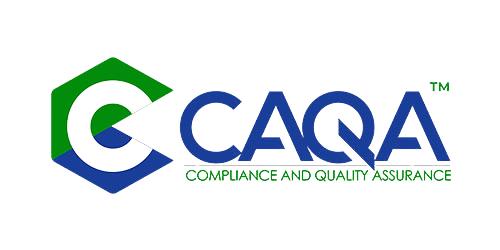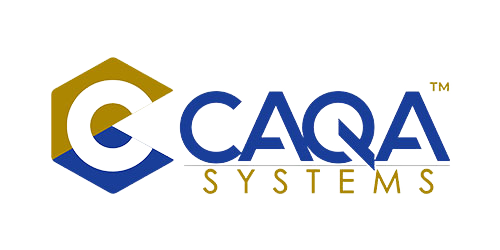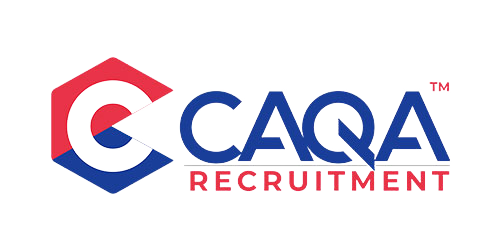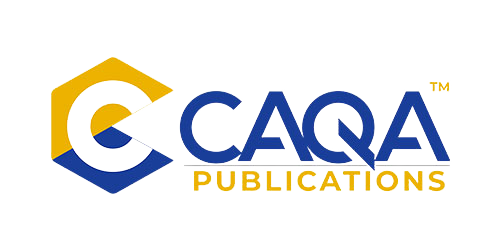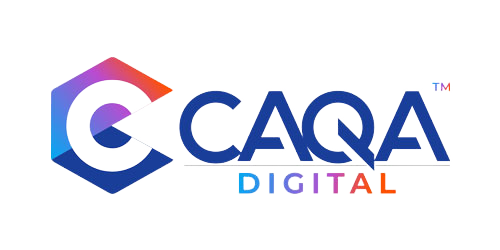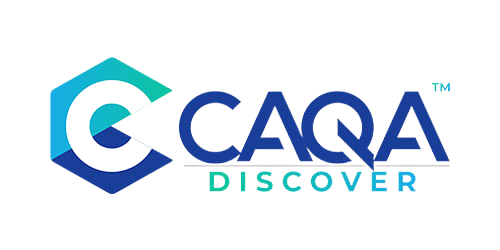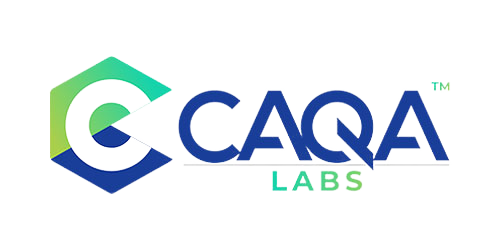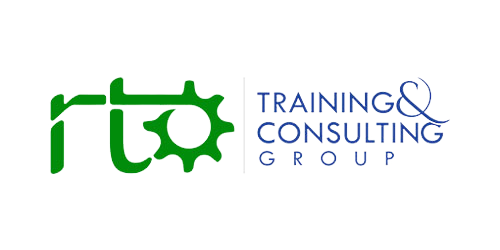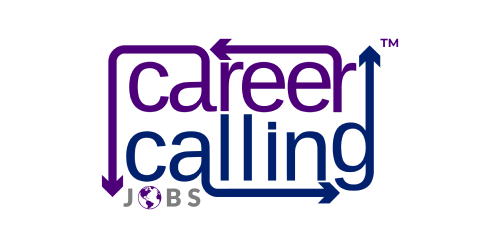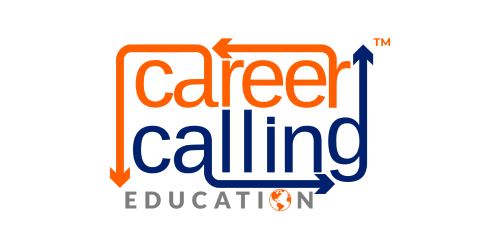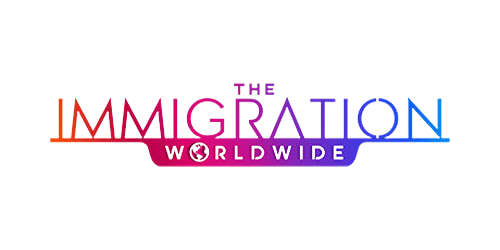THE INCLUSION REVOLUTION: DISABILITY SUPPORT MOVES FROM COMPLIANCE FOOTNOTE TO STRATEGIC PRIORITY
The revised Standards for RTOs 2025 contain a transformative shift that many providers may initially overlook amid the broader regulatory changes: a dramatic elevation of disability support from a compliance footnote to a central, strategic priority with profound operational implications. This revolution is embedded primarily within clauses 2.1, 2.2, and 2.4, which collectively create a far more detailed and demanding framework for identifying, addressing, and documenting support for students with disabilities. While these requirements build upon existing legal obligations under the Disability Discrimination Act and Disability Standards for Education, they represent a quantum leap in expectations for how RTOs operationalise and evidence their inclusive practices.
The implications of this shift extend far beyond policy updates or minor procedural adjustments. For many RTOs, particularly those working with cohorts where disability prevalence is high, this represents nothing less than a fundamental recalibration of staffing models, delivery approaches, assessment practices, and documentation systems. The standards now demand a level of proactive planning, individualised support, and rigorous documentation that will test the capabilities and resources of even the most well-established providers. Yet beyond the compliance challenge lies an opportunity to create genuinely inclusive learning environments that improve outcomes for all students, not just those with disclosed disabilities.
THE DISCLOSURE DILEMMA: WHEN STUDENT CHOICE CREATES SYSTEMIC RISK
Perhaps the most vexing challenge within the new standards is the inherent tension between voluntary disclosure and proactive support. The revised requirements maintain the principle that students should be "supported to disclose a disability if they wish"—a commitment to individual autonomy and privacy that at first glance seems entirely appropriate. Yet this seemingly innocuous phrase conceals a profound operational dilemma for RTOs: how to provide appropriate support and ensure safety when disclosure remains optional and many students choose not to identify their disabilities.
The implications of non-disclosure can be dramatic and potentially dangerous. In high-risk training environments such as telecommunications, construction, or forklift operation, unidentified disabilities such as colour blindness, seizure disorders, or certain medical conditions can create significant safety risks not just for the student but for others in the learning or workplace environment. Even in lower-risk settings, unaddressed learning disabilities or mental health conditions can lead to student disengagement, frustration, and ultimate withdrawal—negative outcomes that might have been prevented through early identification and appropriate support.
The challenge for RTOs is to balance respect for student privacy with their obligation to create safe, supportive learning environments. This requires developing sophisticated approaches to encouraging disclosure, not through pressure or intrusion, but by creating genuinely safe environments where students understand the benefits of sharing their support needs and trust that this information will be used constructively. It also means training staff to recognise potential indicators of disability even when formal disclosure hasn't occurred, and to initiate supportive conversations that might lead to appropriate adjustments before crisis points are reached.
THE EARLY INTERVENTION MANDATE: SHIFTING FROM REACTIVE TO PROACTIVE SUPPORT
The 2025 Standards signal a decisive shift from reactive to proactive approaches to disability support. No longer is it sufficient to address support needs as they emerge during training; RTOs must now identify and plan for these needs "as early as possible"—ideally before enrollment or at the very beginning of the learning journey. This temporal shift has profound operational implications, requiring RTOs to front-load their support processes and integrate disability identification into their marketing, recruitment, and enrollment systems.
This proactive approach demands sophisticated pre-enrollment information that clearly communicates course requirements, potential challenges, and available support options to prospective students. It requires enrollment processes that sensitively encourage disclosure while respecting privacy, and systematic approaches to gathering the information needed to plan appropriate adjustments. It also necessitates early consultation with students, trainers, and potentially external experts to determine what adjustments might be required and how these can be implemented without compromising course integrity or creating undue burden on the organisation.
The benefits of this proactive approach are substantial: students begin their learning journey with appropriate supports already in place, trainers are prepared for the adjustments they'll need to make, and RTOs avoid the disruption and potential compliance risks of retrofitting adjustments after issues have emerged. Yet implementing this approach requires significant investment in systems, staff training, and documentation processes—investments that many RTOs may find challenging but ultimately necessary for both compliance and quality outcomes.
THE DOCUMENTATION IMPERATIVE: EVIDENCE AS THE NEW COMPLIANCE BATTLEFIELD
One of the most consistent findings from sector experience is that while many trainers routinely make reasonable adjustments to support students with disabilities, these adjustments often go undocumented, creating significant compliance vulnerability when auditors review student support practices. The 2025 Standards intensify this vulnerability by raising expectations for documentation while simultaneously making explicit the connection between documented support and quality outcomes. This creates a new compliance battleground where the gap between practice and evidence becomes increasingly perilous.
The documentation requirements extend far beyond simple notations in student files. RTOs must now capture evidence of the entire support journey: initial identification of needs, consultation with the student and relevant experts, consideration of adjustment options, implementation of agreed adjustments, monitoring of their effectiveness, and any refinements made over time. This evidence must be readily accessible during audits and clearly demonstrate how adjustments maintained course integrity while providing equitable access for students with disabilities.
Technology offers potential solutions to this documentation challenge. With advances in mobile devices and cloud-based student management systems, trainers can now capture evidence of adjustments in real time, using voice notes, photos, or quick digital forms that feed directly into centralised student records. This technological approach can transform documentation from a burdensome administrative afterthought to an integrated element of delivery practice—but it requires both appropriate digital infrastructure and staff capability development to implement effectively.
THE CLASSROOM REALITY: HIGH-PREVALENCE COHORTS AND TEACHER CAPACITY
The abstract requirements of the standards meet concrete operational challenges in classrooms where disability prevalence is exceptionally high. In some VET in Schools cohorts, for example, up to two-thirds of students may have diagnosed learning disabilities such as dyslexia, attention deficit disorder, or autism spectrum conditions. This creates intense demands on trainer capacity, classroom management, and individualised support that many RTOs are ill-equipped to address with traditional staffing models and delivery approaches.
The implications for class size are direct and significant. While standard VET classes might accommodate 20-25 students with minimal support needs, cohorts with high disability prevalence may require capping at around 16 students to ensure appropriate individual attention and adjustment. This numerical reduction has obvious financial implications: smaller classes typically generate less revenue while requiring the same fixed costs for trainer time and facilities. The economic equation becomes even more challenging when specialised support personnel or assistive technologies are required to enable full participation.
Beyond these resource considerations lies an equally important human dimension: the welfare and capacity of trainers themselves. Those working intensively with high-needs cohorts report significant emotional and physical fatigue—a form of occupational stress that requires recognition and support if quality is to be maintained. RTOs must therefore consider not just how they support students with disabilities but also how they support the staff providing that support, through appropriate professional development, coaching, debriefing opportunities, and workload management.
THE BOUNDARIES OF ADJUSTMENT: WHEN CORE REQUIREMENTS CANNOT BE COMPROMISED
While the obligation to provide reasonable adjustments is strong and explicit, the 2025 Standards maintain clear boundaries around what constitutes "reasonable" in the context of vocational training. Adjustments must not compromise the core competency requirements of a qualification, particularly when these requirements reflect genuine occupational demands or safety considerations. This principle creates necessary limits while still requiring creative approaches to maximising inclusion wherever possible.
A frequently cited example illustrates this boundary: in first aid training, the ability to physically perform CPR on the floor is a core requirement that cannot be adjusted if the qualification is intended to certify capability for workplace application. A student using a wheelchair who cannot transfer to the floor may therefore be unable to complete the full qualification if that particular competency is required. However, this does not mean they should be excluded from the training entirely. RTOs have developed innovative approaches, such as issuing statements of attainment for completed units and working with employers to identify alternative employment pathways that maximise the student's capabilities while acknowledging limitations.
This example highlights the sophisticated judgment required to navigate the territory between maximum inclusion and qualification integrity. RTOs must make these judgments on a case-by-case basis, considering the specific requirements of each qualification, the particular needs of individual students, and the context in which skills will ultimately be applied. These decisions must be made transparently, in consultation with the student, and with clear documentation of the rationale for any limitations on adjustment.
THE TECHNOLOGY OPPORTUNITY: DIGITAL TOOLS FOR INCLUSION AND EVIDENCE
The widespread adoption of digital devices—with over 90% of Australians aged 16 and over now possessing a mobile phone or tablet—creates unprecedented opportunities to enhance both the implementation and documentation of disability support. Technology can simultaneously make learning more accessible, reduce administrative burden, and create robust evidence trails that demonstrate compliance with the 2025 Standards' elevated expectations.
For students with disabilities, digital devices offer built-in accessibility features that can transform the learning experience. Text-to-speech functionality assists those with reading difficulties or visual impairments; dictation tools support students with writing challenges; and colour filters help those with specific visual processing issues. Learning management systems can provide materials in multiple formats, allow flexible pacing, and incorporate multimedia elements that cater to diverse learning preferences. Assessment platforms can be configured to provide additional time, simplified interfaces, or alternative response methods without requiring separate administration or stigmatising accommodations.
For trainers and administrators, technology streamlines the documentation of support and adjustments. Mobile apps allow real-time capture of adjustments made during training sessions; digital forms structure and standardise the recording of support needs and interventions; and integrated student management systems ensure that information about required adjustments flows seamlessly between enrollment, training, and assessment functions. These technological tools can transform compliance from a burdensome documentation exercise to an integrated element of quality practice.
However, RTOs must navigate complex rules around technology provision. While most funding contracts prohibit offering digital devices as enrollment incentives, many RTOs have developed equipment loan programs that provide iPads or similar devices to students who need them for accessibility purposes. The key is clear communication about technology requirements in pre-enrollment information, coupled with appropriate support to ensure all students can access and utilise the required digital tools regardless of their personal circumstances.
THE PROFESSIONAL DEVELOPMENT PRIORITY: BUILDING STAFF CAPABILITY FOR INCLUSIVE PRACTICE
The elevated expectations for disability support create an urgent need for targeted professional development that equips all RTO staff—not just designated support specialists—with the knowledge, skills, and confidence to implement inclusive practices effectively. This represents a significant investment, but one that is essential for both compliance and quality outcomes under the 2025 Standards.
Professional development must be contextualised to the specific training products and learner cohorts of each RTO. Generic disability awareness training, while valuable as a foundation, is insufficient to prepare trainers for the practical challenges they will face in implementing reasonable adjustments while maintaining qualification integrity. Effective PD programs address specific scenarios relevant to particular industry areas, explore the adjustments most appropriate for different disability types, and provide hands-on practice with documentation systems and assistive technologies.
Beyond formal training, RTOs must foster communities of practice where trainers can share experiences, strategies, and resources for supporting students with disabilities. These peer learning networks are particularly valuable for addressing the emotional and practical challenges of working with high-needs cohorts, providing both technical guidance and collegial support. They also help to embed inclusive practice in organisational culture, moving it from a compliance obligation to a shared professional commitment.
Communication skills are particularly critical, as many support failures stem not from lack of willingness but from breakdowns in information flow. Trainers frequently report that disability disclosures made during enrollment are not passed on to them, especially when student management systems are not accessible to all relevant staff. Professional development must therefore address not just disability-specific knowledge but also the communication and documentation skills needed to ensure that support needs identified at any point in the student journey are effectively communicated to all who need this information.
THE STRATEGIC RESPONSE: OPERATIONAL MODELS FOR SUSTAINABLE INCLUSION
Meeting the elevated expectations for disability support in the 2025 Standards requires more than policy updates or staff training—it demands strategic reconsideration of fundamental operational models, from staffing structures to delivery approaches. RTOs must find sustainable approaches that balance compliance requirements with financial viability, quality outcomes with operational efficiency.
One strategic approach involves aligning trainer allocation with individual strengths and preferences. Detail-oriented trainers may be particularly effective at online marking and documentation, while those with strong interpersonal skills may excel in classroom delivery and student support. By matching responsibilities to capabilities, RTOs can optimise both efficiency and effectiveness while reducing staff stress and turnover. This specialised approach represents a departure from the traditional model where trainers are expected to perform all aspects of the training and assessment cycle regardless of their particular strengths.
Another strategic consideration involves the integration of specialised support roles. Rather than expecting every trainer to be an expert in disability support, some RTOs are developing models where disability specialists work alongside trainers, providing targeted expertise while allowing trainers to focus on content delivery. These specialists may range from full-time inclusion coordinators in large organisations to shared consultants serving multiple smaller RTOs. Such approaches can be more cost-effective than trying to develop comprehensive disability expertise across the entire trainer workforce.
Technology strategy is equally critical, with integrated digital systems becoming essential for both support delivery and compliance evidence. RTOs must invest in student management systems that capture support needs at enrollment and make this information readily available to all relevant staff; learning management systems that incorporate accessibility features and flexible delivery options; and documentation tools that streamline the recording of adjustments and interventions. These technological investments represent significant initial costs but can deliver substantial long-term benefits in both compliance efficiency and educational quality.
THE PRACTICAL IMPLEMENTATION: BUILDING SYSTEMS THAT WORK
Translating the abstract requirements of the 2025 Standards into practical, day-to-day operations requires systematic approaches that are both rigorous enough to ensure compliance and flexible enough to accommodate diverse student needs. RTOs must develop structured processes that guide staff through the entire support journey while allowing for professional judgment and individualised responses.
Effective implementation begins with comprehensive pre-enrollment information that clearly communicates course requirements, potential challenges for students with different disabilities, and available support options. This information should be provided in accessible formats and explicitly encourage early disclosure of support needs. Enrollment processes should include sensitive but direct questions about support requirements, coupled with clear explanations of how this information will be used and the benefits of disclosure.
Once needs are identified, systematic planning processes should document the consultation, consideration, and implementation of reasonable adjustments. These processes must involve the student directly, respect their preferences and expertise regarding their own disability, and create clear documentation of agreed adjustments. Training and assessment strategies should explicitly address potential reasonable adjustments for different disability types, ensuring that trainers have pre-approved guidance on appropriate modifications while maintaining course integrity.
Monitoring and review mechanisms must be built into delivery practices, with regular checkpoints to assess whether adjustments are effective or require refinement. These reviews should involve both the student and relevant staff, and should generate updated documentation that demonstrates responsive, ongoing support rather than a one-time accommodation. When issues arise—as they inevitably will—clear escalation pathways should guide staff in seeking additional expertise or resources to address complex support needs.
Throughout all these processes, documentation must be integrated rather than retrospective. Digital forms, checklists, and templates can structure the recording of support activities while ensuring consistency and completeness. Mobile apps and cloud-based systems can enable real-time documentation during training sessions, eliminating the gap between practice and evidence that creates compliance vulnerability.
CONCLUSION: THE PATH FORWARD FOR INCLUSIVE EXCELLENCE
The 2025 Standards' elevated expectations for disability support present both significant challenges and transformative opportunities for Australia's RTOs. While the compliance bar has been raised substantially, the underlying principles align perfectly with quality educational practice: identifying student needs early, providing appropriate support throughout the learning journey, and documenting both actions and outcomes to enable continuous improvement.
RTOs that approach these requirements strategically—investing in staff capability, leveraging technology, redesigning operational models, and embedding inclusive practice in organisational culture—will find themselves well-positioned not just for compliance but for educational excellence. Their students with disabilities will experience genuine inclusion rather than token accommodation; their staff will develop valuable professional capabilities that enhance all aspects of training delivery; and their organisational reputation will benefit from demonstrable commitment to equity and quality.
The path forward requires significant investment, both financial and cultural. Policy updates alone will not suffice; nor will superficial compliance measures that fail to address the fundamental operational implications of truly inclusive practice. RTOs must be willing to reconsider long-established approaches to staffing, delivery, assessment, and documentation if they are to meet the new standards while maintaining financial sustainability and educational quality.
Those that rise to this challenge will discover that inclusive excellence is not a compliance burden but a strategic advantage—a pathway to better outcomes for all students, enhanced staff capability, and stronger organisational performance. The disability imperative embedded in the 2025 Standards is not just a regulatory hurdle but an invitation to transform vocational education into a genuinely inclusive system that maximises human potential regardless of ability or circumstance.










